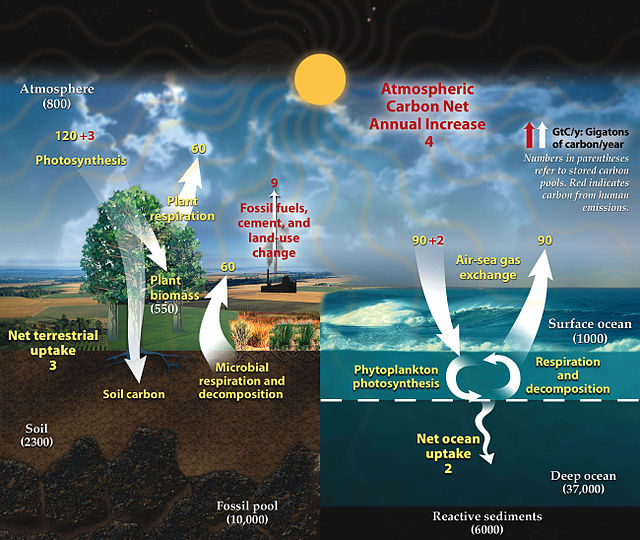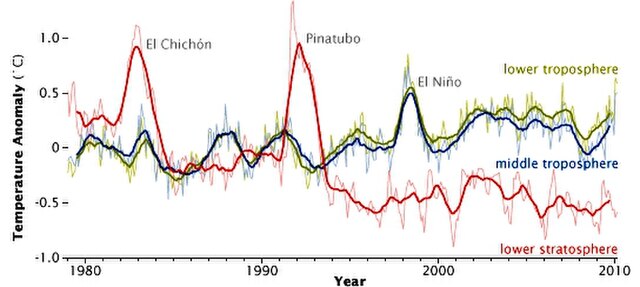Earth's climate system is a complex system with five interacting components: the atmosphere (air), the hydrosphere (water), the cryosphere, the lithosphere and the biosphere. Climate is the statistical characterization of the climate system. It represents the average weather, typically over a period of 30 years, and is determined by a combination of processes, such as ocean currents and wind patterns. Circulation in the atmosphere and oceans transports heat from the tropical regions to regions that receive less energy from the Sun. Solar radiation is the main driving force for this circulation. The water cycle also moves energy throughout the climate system. In addition, certain chemical elements are constantly moving between the components of the climate system. Two examples for these biochemical cycles are the carbon and nitrogen cycles.
The five components of the climate system all interact. They are the atmosphere, the hydrosphere, the cryosphere, the lithosphere and the biosphere.
Earth's atmospheric circulation is driven by the energy imbalance between the equator and the poles. It is further influenced by the rotation of Earth around its own axis.
Carbon is constantly transported between the different elements of the climate system: fixed by living creatures and transported through the ocean and atmosphere.
In atmospheric temperature from 1979 to 2010, determined by MSU NASA satellites, effects appear from aerosols released by major volcanic eruptions (El Chichón and Pinatubo). El Niño is a separate event, from ocean variability.
The hydrosphere is the combined mass of water found on, under, and above the surface of a planet, minor planet, or natural satellite. Although Earth's hydrosphere has been around for about 4 billion years, it continues to change in shape. This is caused by seafloor spreading and continental drift, which rearranges the land and ocean.
The Earth captured in the Pacific Ocean side
Image: Watercyclesummary






